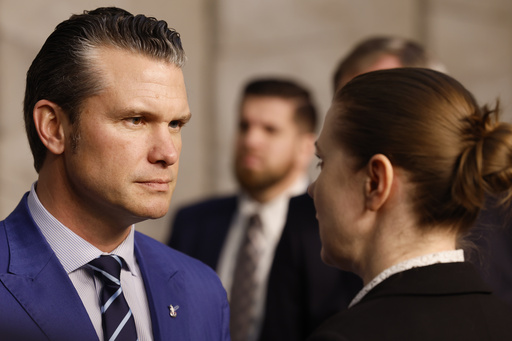BRUSSELS — This week, a speech from U.S. Defense Secretary Pete Hegseth has stirred significant uncertainty within NATO, the world’s foremost military alliance. Hegseth addressed nearly 50 Western supporters of Ukraine, delivering a message that raised questions about America’s ongoing dedication to European security. He emphasized that “stark strategic realities” compel the U.S. to focus primarily on its own security concerns, leaving European defense as a secondary priority.
In what seemed like a stark warning to allied nations, Hegseth asserted that Ukraine will not regain all its territory from Russia and indicated that its NATO aspirations would not be fulfilled, stating such measures were essential to ensure long-term security. He conveyed that NATO would not engage in any future operations to enforce peace in Ukraine; instead, he stressed that European nations would have to finance and carry out such initiatives independently, with the U.S. being unwilling to contribute troops to any potential peacekeeping effort.
Furthermore, Hegseth cast doubt on NATO’s collective defense commitments, clarifying that the alliance would not assist any European nation involved in these efforts should it face aggression from Russia. The uncertainty surrounding the U.S. role in such scenarios raises concerns, particularly given Russia’s tendency to challenge defenses when they seem weak.
French Defense Minister Sébastien Lecornu remarked that NATO is at “a real moment of truth.” He acknowledged the alliance’s historic strength, yet posed the critical question of whether it would maintain that robustness over the next decade or more.
NATO, established in 1949 as a response to the Soviet Union’s threats during the Cold War, has evolved into an alliance of 32 nations, growing more robust after Sweden’s recent entry, spurred by fears of an increasingly assertive Russia. The credibility of NATO hinges on Article 5, a commitment that obliges member nations to assist any member whose sovereignty is under siege. Hegseth’s recent statements have cast doubt on U.S. dedication to this promise, although he reaffirmed that the United States has no intention of exiting the alliance.
NATO welcomes any European nation aspiring to join, provided they fulfill necessary requirements. Decision-making within the alliance hinges on consensus, giving each member a veto over significant policies. In a decisive move, Hegseth seemingly sidelined Ukraine’s application for NATO membership.
As the most dominant member of NATO, the United States far outspends all other allies on defense and wields considerable military influence, thereby setting the agenda. Hegseth’s pronouncements signify a shift in dynamic, indicating a top-down approach from the U.S. regarding future military and diplomatic strategies within the alliance.
Leadership of NATO’s daily operations falls to former Dutch Prime Minister Mark Rutte, who oversees regular ambassadorial meetings and acts as the spokesperson for all member nations. NATO’s military structure, headquartered in Mons, Belgium, is headed by a U.S. officer, currently Army Gen. Christopher Cavoli.
Despite recognizing the existential threat Russia poses, it’s important to note that NATO, as an organization, is not directly supplying Ukraine with arms. The alliance itself lacks weapons; instead, it focuses on non-lethal support, including logistics like fuel, medical supplies, and equipment. Individual countries, however, continue to send arms and military aid to Ukraine. Notably, European nations provided 60% of military aid to Ukraine in 2024.
NATO has been instrumental in modernizing Ukraine’s military strategies and enhancing its security structure. Misunderstandings often arise about NATO’s role – many equate it with U.S. actions in Europe, including sanctions against Russia and support for military endeavors. However, the organization’s mandate is to protect its own member states, fostering a commitment to peace in Europe and North America.
The future of NATO’s presence on European borders remains solidified, with members maintaining high readiness levels. Currently, there are 500,000 troops poised to respond to potential threats across various domains, including land, sea, air, and cyberspace.
In terms of defense contributions, the U.S. has traditionally borne a significant burden due to its extensive military expenditures, leading to advanced troop capabilities and logistical prowess. Although other NATO allies are gradually increasing their defense budgets, Rutte has indicated that a shift from the current 2% target of GDP on defense spending may be necessary.
Lecornu remarked that the discussions on defense spending are somewhat misleading, as European governments are already augmenting their military capabilities through larger budgets and weapon acquisitions, alongside support for Ukraine’s self-defense efforts. This shift in focus within NATO might redefine the dynamics of European security as each nation reassesses its contributions in alignment with the new geopolitical landscape.




